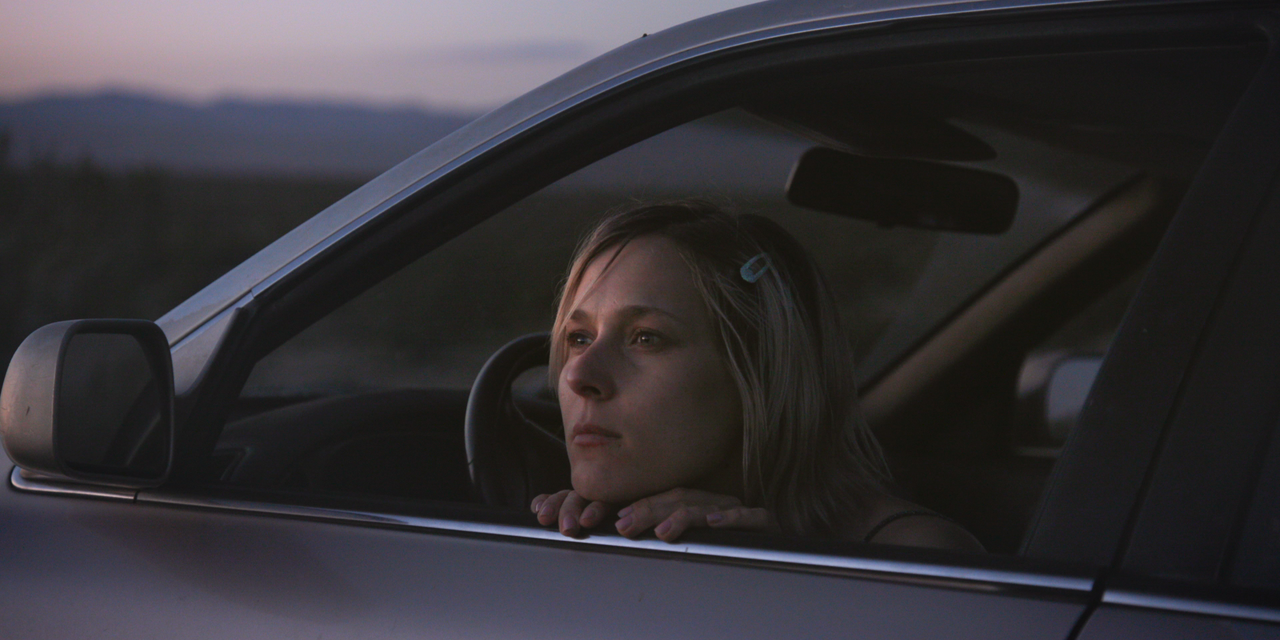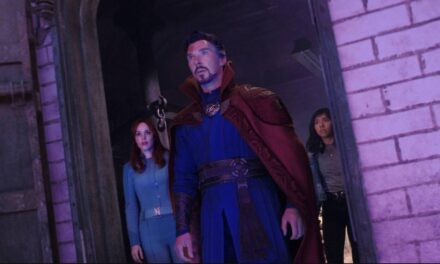Every breakup requires some amount of struggle and self-reflection. ‘Roving Woman’ seeks to ponder these themes through the eyes of Sara (Lena Gora), whom we meet at her now ex-fiance’s doorstep. Why he breaks up with her is not exactly clear to us. Sara beckons for a reason through the non-committal coldness of a Ring doorbell, but to no avail. Sara, who has no money or belongings and is dressed in an elegant dress, has to venture out into the world in search of something. Inspired by the sudden disappearance of singer Connie Converse in the 1970s, director/co-writer Michal Chmielewski commits to making Sara’s character as invisible as possible. When Sara approaches a mutual friend for a ride, they speak about the concepts of relationships. When he mentions he enjoys being alone, it perplexes her. She’s been with her fiancé, Ted, for six years — all she has to show for it is wishing for his hopes and dreams.
Roving Woman’s singular device comes into play when Sara finds a car at a bar and steals it. From there, our main character goes on a journey to gain the parts of herself she never knew she had. Chmielewski’s style prefers to be a fly on the wall. At points, you’ll see conversations that Sara has through the driver’s side window or off-camera, as the point-of-view elects to stay in the passenger seat. A lot of spaces in time are just Sara’s character driving and feeling how almost liberating it feels to venture into unknown territory.
At moments of stillness, Sara looks at the car’s contents and finds a CD labeled “For Mimi.” Here, the car’s original owner, Gregory Milloy (John Hawkes), has made tracks of recordings to the woman he loves and even innocent banter about his day. It becomes a fascination with Sara, tying back to a piece of dialogue at the beginning of Roving Woman when she states Ted “never tells her he loves her.” The film’s middle parts follow the “all is lost” template, where one character finds themselves at their lowest point. Sara’s mother didn’t allow her to come home for an unknown reason. She has to wring out money for gas and morsels of food. At specific points, it feels like Roving Woman veers off into the conventional post-breakup search for epiphany.
However, the writing of Chmielewski and Gora sharpens towards the film’s latter half. Sara finds a little piece of the story in each person she encounters on her ongoing excavation through the Joshua Tree desert. Her curiosity about discovering more about the vehicle’s owner and her independence’s highs and lows form a clearer picture. It’s not so much Sara is looking for a new relationship or wanting to rekindle her old one — Roving Woman shows how a cloak of anonymity can lead you to a fulfilling place. With every person she meets, Sara takes the small tidbits of what she knows about Milloy and forms a narrative she hopes to manifest for herself.
Maybe the message of Roving Woman is that we have to get lost to find ourselves. It could even be a cautionary tale of keeping your individuality alive in a long-term relationship. In one scene, Sara has a pretend conversation with Ted — proclaiming she needs to go on a long drive and recalling all the things she did for him on his course to be famous. Long drives are a cure to untangle life’s parables, and this one provides a lot to consider.
Photo Credit: Tribeca 2022













